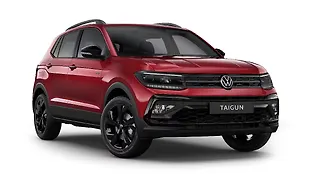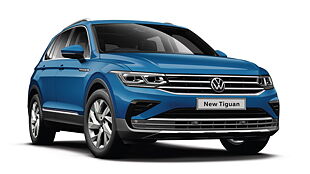Introduction

Waking up to the various sounds of birds chirping and the wind brushing against the roof of your tent at the Jadhavgarh Fort was quite an experience. It was the location of one of those drives where our car would be flagged off by two men pointing their tutaris in the air announcing your departure. There should be a car that befits the honour of such treatment and it was the 2015 Volkswagen Jetta that I would be driving to Mahabaleshwar.
While we await the beginning of the 2015 Cricket World Cup, VW opened their innings in 2015 with their D-segment challenger – the Jetta. The Jetta, just like its younger sibling, the Vento was an underdog in the D-segment and slid under the radar in the company of the Skoda Octavia, Toyota Corolla and the Chevrolet Cruze. So, what’s new in the updated Jetta aesthetically and mechanically that would put it back in the game is what we found out.
Design and Interior

Volkswagen has always been subtle with its styling updates on facelifted versions, be it the Polo, Vento or for that matter the new Jetta. The updated car carries minimal styling revisions and you can count them on your fingertips. The headlight unit is now equipped with LED strips without any changes to the layout and the grille now gets an additional chrome slat on the top. The bumper at the front is new, so is the small kink at the top of the boot lid and the new design tail lamps. All these minor revisions make the car look sharper than before and it is one of the elegant cars in the D-segment.

The cabin doesn’t tell you a different story either, with the changes being lesser than that on the outside. The new flat-bottom steering wheel is straight from the Polo and the Vento and I would write the same that I wrote when I reviewed the Polo, it is brilliant. The dashboard is angled at the driver, clearly showing the focus of the car. Everything is well laid-out and falls nicely to hand and while the cabin is very functional, the quality seems a little compromised as everything looks like have been borrowed from the Polo and the Vento. If you have been in a VW car before, you would relate to the instrument layout, the placement of the wing mirror adjustments, it’s all the same albeit, things are larger.

Engine and Performance

The updated car doesn’t get any revision to the mechanicals and it will be powered by the same engines used in the outgoing model. It then leaves the buyer with a choice of three engines to choose from. The base model is a 1.4-litre TSI petrol mated to a six-speed manual gearbox and a 2.0-litre TDI diesel with an option of a six-speed manual box or a 6-speed DSG automatic.

Battling to distinguish the diesel drone from the noise of the tutaris, on leaving the venue, I was more than happy to find that the car made little noise at low speeds. The diesel is refined, you do hear the engine after 1,600 rpm, but the noise is not unpleasant at all. This 2.0-litre diesel mill like the smaller 1.5-litre engine on the Polo and the Vento revs cleanly all the way to its redline.
Be gentle on the accelerator pedal and the DSG will be done shifting all the gears in a jiffy. If you are generous enough to flex your right foot it will select the optimum gear for the amount of power demanded. It is like an over-enthusiastic pet that wants to please you all the time.
The 1.4-litre TSI had the six-speed manual gearbox and with the limited space we had, I could run through only three gears and it did 50kmph in first gear, 100kmph in second gear and 150kmph in third gear. Well, that’s some gear ratios! The petrol also pulls cleanly from low speeds like 5kmph in second gear without signs of knocking. The third gear can take you from 20kmph to 150kmph without a complaint. While we didn’t drive it on a fast freeway, but in sixth gear at 2100rpm the car was doing 100kmph that’s not bad considering it redlines at 6700rpm. The petrol doesn’t have an engine note that you would want you to rev it all the way to its redline, but it sounds sweet nevertheless.
This six-speed manual gearbox is one of the best gearboxes you can run your hands through and you wouldn’t loathe a single moment using it. The clutch is light on the petrol variant and the standing accelerator pedal is a joy to use during heel and toe shifting and is more comfortable for the right foot while using it than the hanging pedal.
Overall, the diesel Jetta seems sprightlier than the petrol variant and is the more practical version of the two. If you travel short distances or you don’t want a diesel car, then the petrol makes sense. Otherwise the diesel variant is just better and the petrol unit seems just adequately powerful for the Jetta. We hope VW decides to launch the 1.8-litre TSI with 180bhp to make a strong case for the enthusiasts.
The suspension setup is ideal for our roads and the Jetta strikes the right balance between ride and handling. It is not an out and out handling machine that you would want to go tearing around the corners with, also it has a tendency to oversteer at the limit, but you need to be pushing really hard for that to happen. The ride on the other hand is flat and supple, it rides so well you wouldn’t know most rough patches you passed unless you look in the mirror. It rides on Goodyear tyres that provide decent amount of grip and are acceptably quiet at high speeds. The braking on the Jetta is effective with disc brakes on all four wheels and the car doesn’t veer off the intended line even under hard braking at high speeds.

Verdict

The Jetta hasn’t changed much, the changes are merely cosmetic and the 1.8-litre TSI engine is still not available. Perhaps, the car is good enough for the company to not warrant too many changes, but is it good enough to woo a potential D-Segment buyer is a tough question. The D-segment has cars like the Skoda Octavia, Chevrolet Cruze, Toyota Corolla and the Hyundai Elantra with each car having a unique selling proposition. The Cruze is the most powerful car in the class; the Elantra offers features at a lower price, and the Corolla is comfortable and offers Japanese reliability. Then there is the Skoda that is an all-rounder and is based on VW’s modern MQB platform and shares the same powertrains with the Jetta.
But, the Jetta will appeal to someone who wants an European car with simple yet elegant styling, a good ride and handling package, and a car that is good to drive and to be driven around. It seems quite close to the Skoda Octavia’s territory. The Skoda Octavia, is built on a modern platform and does everything that the Jetta does. Which, brings us to the pricing and this, we feel will play a very crucial role in the possible success of the sedan.


























